5 Gentle Strength Moves That Keep Women Over 50 Lean and Pain-Free
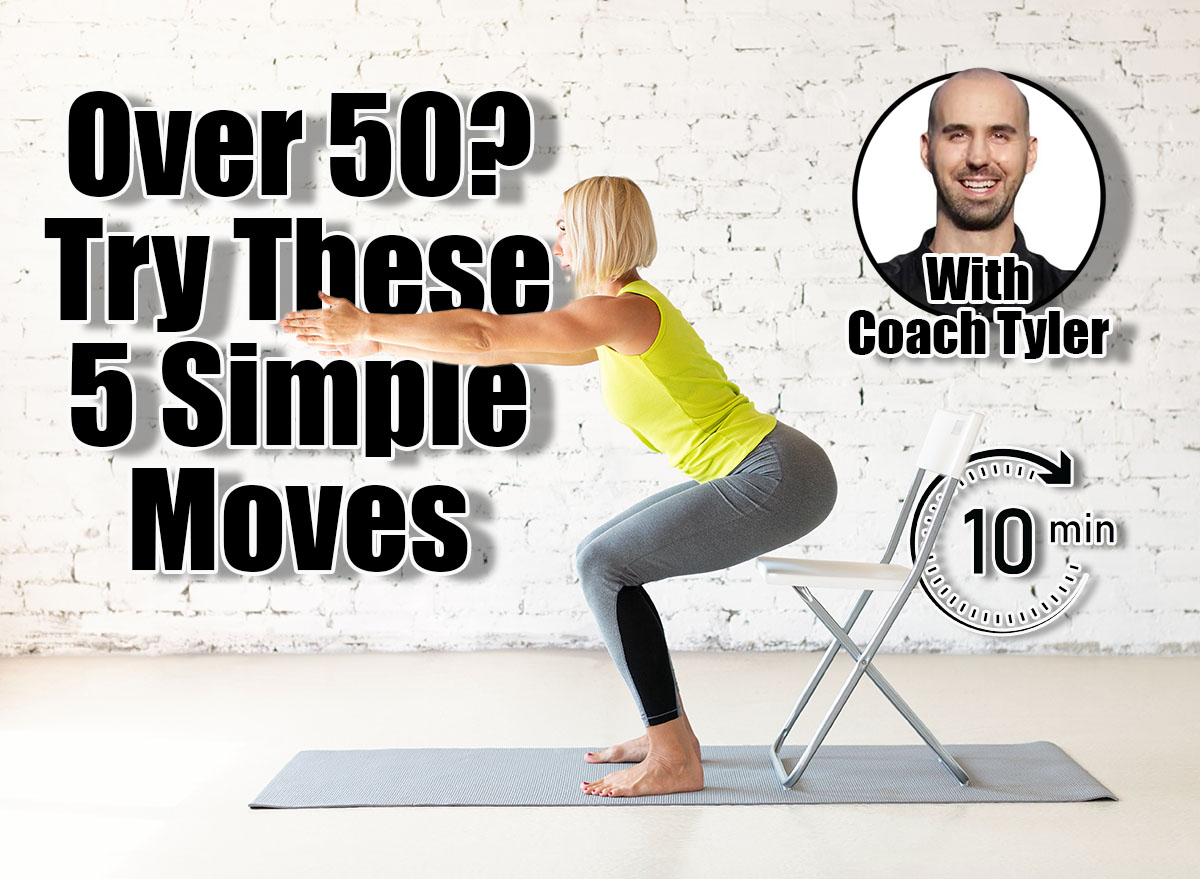
Strength training after 50 isn’t about lifting heavy or pushing through pain. It’s about choosing smart, gentle movements that support your joints, protect your spine, and keep you lean, strong, and mobile. As a trainer, I’ve seen firsthand how the right exercises make daily life easier: less stiffness, fewer aches, and more energy.
These five moves are low-impact but incredibly effective. They target key muscle groups like your core, hips, and shoulders, all areas that tend to weaken with age. You won’t need a gym or any fancy gear; just a pair of light dumbbells and a chair or wall for support. They’re designed to build strength while being kind to your body.
These exercises don’t look flashy, but they do serious work. Commit to them a few times a week, and you’ll move better, feel stronger, and stay pain-free long term.
5 Strength Moves To Keep Women 50+ Lean & Pain-Free
Chair Squats
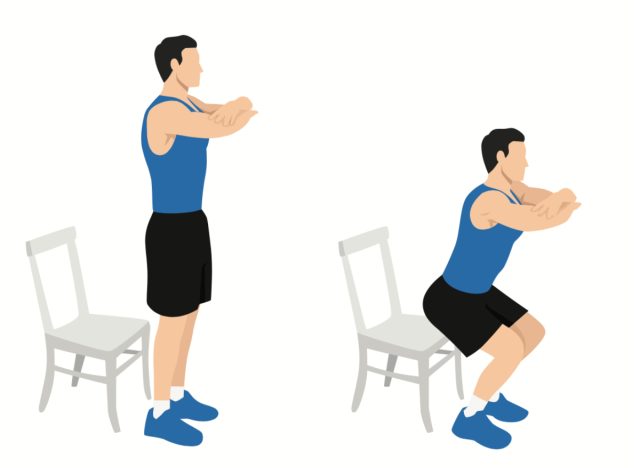
Chair squats strengthen the legs and glutes without straining the knees or lower back. Doing chair quats also improve balance and coordination, which are essential for injury prevention as we age. By activating your glutes and quads, chair squats support better posture and joint alignment, reducing pressure on your knees and hips. Strengthening these large muscle groups also boosts your metabolism over time.
How to do it:
- Stand in front of a sturdy chair with feet shoulder-width apart.
- Push your hips back and lower down until your glutes tap the chair, don’t fully sit.
- Drive through your heels to stand up tall.
- Do 10–12 controlled reps.
Wall Angels
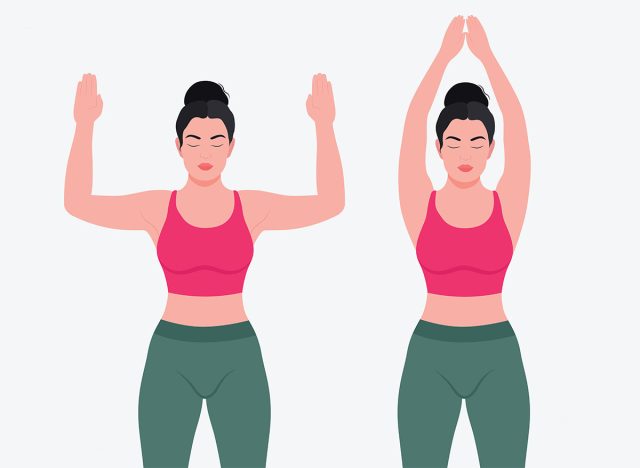
Wall angels improve upper back strength, shoulder mobility, and posture all without weights. They gently open up the chest and activate underused back muscles, making them especially useful for countering hours of sitting or slouching. Good posture allows you to move efficiently and prevents pain in the shoulders and neck. Strengthening your back muscles also supports the spine, reducing the risk of injury.
How to do it:
- Stand with your back, butt, and heels against a wall.
- Raise your arms into a goalpost position, keeping elbows and wrists against the wall.
- Slowly slide your arms up, then back down.
- Repeat for 10–12 reps, focusing on control.
Heel Slides
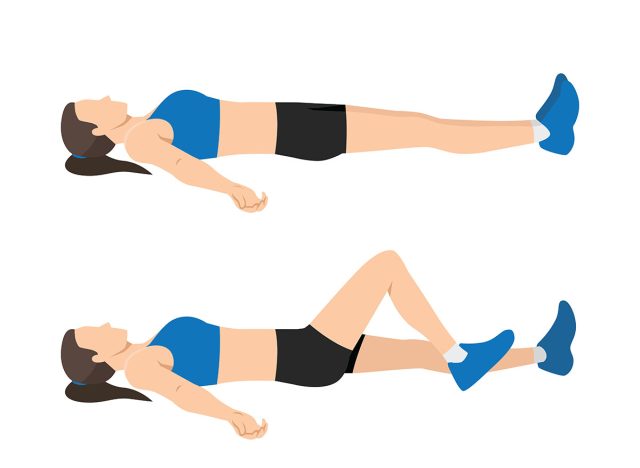
Heel slides strengthen your deep core and hip flexors while supporting low-back health. This move activates the transverse abdominis, a key muscle for spinal stability. Strong deep core muscles mean less back pain and better control during movement.
How to do it:
- Lie on your back with knees bent and feet flat.
- Gently slide your right heel away from your body until your leg is nearly straight.
- Slide it back to start, then repeat on the other side.
- Do 10 reps per leg, keeping your core tight the whole time.
Standing Calf Raises
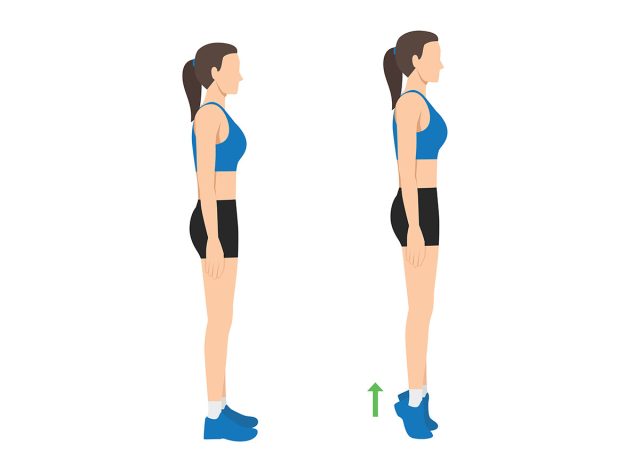
Calf raises improve ankle strength, balance, and lower-leg tone without any strain. Standing calf raises maintain walking power and reduce fall risk as you age. Strong calves support healthy gait patterns and take pressure off the knees. They’re also a sneaky way to boost circulation and joint stability.
How to do it:
- Stand near a wall or chair for balance.
- Slowly rise onto your toes, lifting your heels off the floor.
- Lower down with control.
- Perform 12–15 reps.
Seated Knee Extensions
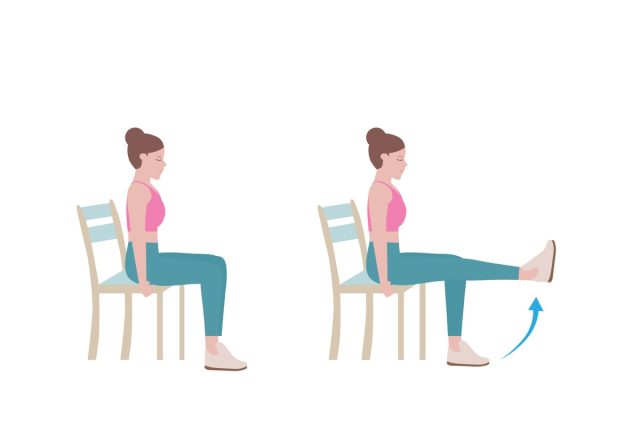
Seated knee extensions strengthen the quads without stressing the knees or hips. The seated knee extensions reinforces joint stability and keeps the lower body strong for walking, climbing stairs, and standing with confidence. It also improves circulation and muscular endurance, especially helpful for long days on your feet.
How to do it:
- Sit tall in a sturdy chair with feet flat and knees bent.
- Slowly extend your right leg until it’s straight out in front of you.
- Hold for a second, then lower with control.
- Perform 10–12 reps per leg.